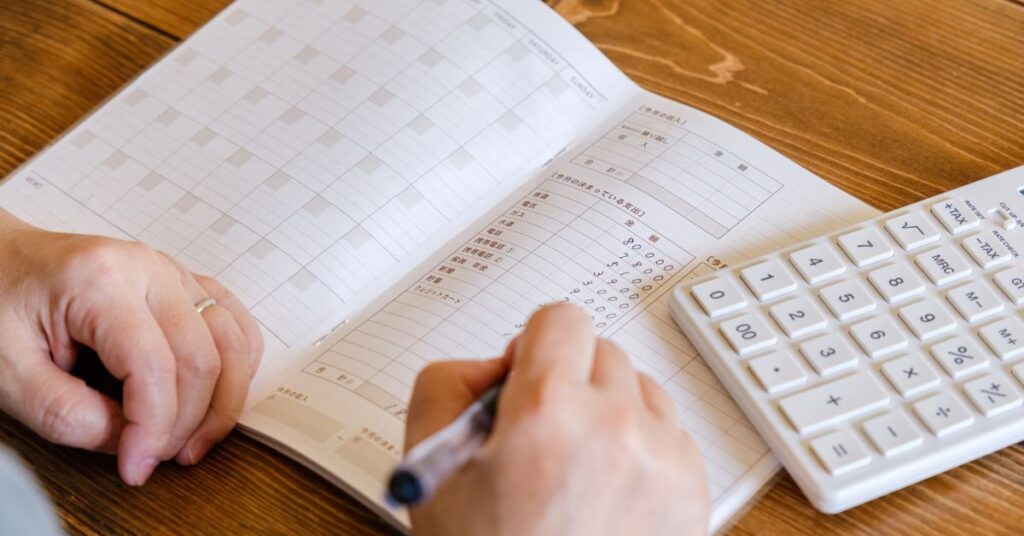You want less money stress and more control. You do not need a degree. You need a few habits that you can repeat. This “Introduction to personal finance.” keeps things tight, real, and U.S. specific. Use it to set up your cash, your credit, your saving, and your retirement moves. If you share this with your son or nephew, great. I added a full section on personal finance for teens as well.
Step 1: Know your cash picture without guessing

Start with one simple budget that you can run in under 15 minutes a week. If you like hard numbers, the 50–20–30 split works for many people. It means 50 percent to needs, 20 percent to saving and debt payoff, and 30 percent to wants. The CFPB even published a worksheet with this idea baked in, if you want a printed guide.
If you want a lighter tool, use the free worksheet from. You list income, list bills, and see what is left for saving. Print it or keep a copy in your drive. Simple beats fancy, most days.
One more data point for context. The U.S. personal saving rate sits around 4 to 5 percent this year. That is the average, not the target, but it shows why most folks feel behind. Aim higher than the average. Even a few points more changes your buffer fast.
Step 2: Build an emergency fund that actually helps
Set a goal that fits your work risk. Many planners suggest three to six months of core bills. If your income swings or your job feels shaky, push higher. Keep it in cash, in a safe account you can reach fast. The CFPB and CFP Board both back this range.
Do not wait for a “perfect” month. Move a small, fixed amount every payday. Treat it like rent. Automation beats willpower on long weeks.
Step 3: Tackle debt with math you can keep
Two moves work well.
- High-rate first. Line up every balance by APR and hit the highest rate with extra cash. Keep minimums on the rest. The APR includes fees and shows the true cost of that debt. The CFPB explains this clearly.
- Small wins first. If you stall out, clear the smallest balance to get momentum, then move the freed payment to the next card. Less “optimal” on paper, but it helps many people stick with it.
Pick one. Automate payments. Review once a month.
Step 4: Make credit a tool, not a trap
Your score ranges from 300 to 850 on most models. A “good” range starts about 670 and up. Missed payments hurt the most. Keep use on cards low and pay on time. That is the core.
Pull free credit reports from the official site once per year per bureau. Space them out every four months and you get regular checkins all year. Ignore look-alike sites. Use . It is the one set by federal law.
Small note many people miss. Do not worry if a lender uses VantageScore or a different FICO version. The habits that move one will move the others over time.
Step 5: Retirement saving you can start this week
If your job offers a 401(k), set a small percent now and raise it each quarter. The 2025 employee contribution limit is 23,500 dollars. For ages 50 to 59 and 64+, you can add a standard catch-up of 7,500 dollars. For ages 60 to 63, a “super” catch-up of up to 11,250 dollars kicks in under SECURE 2.0. That is meaningful if you are behind.
No 401(k) at work. Then look at an IRA. For 2025, you can put in 7,000 dollars, or 8,000 if you are 50 or older, subject to income rules and the type of IRA.
If you carry a high deductible health plan, an HSA can help both current costs and future retirement medical bills. For 2025, limits are 4,300 dollars for self-only and 8,550 for family coverage, plus a 1,000 catch-up at 55+. These numbers come straight from IRS guidance.
Do not wait for perfect. Start low. Increase by one percent of pay each raise or each quarter.
Step 6: Taxes, paychecks, and pay yourself first
Pick a savings rate you can keep through slow months. Route it out of your checking the same day your pay lands. The fewer times you “decide,” the more money you keep. Use your payroll system to split direct deposit. Or set an auto transfer for the evening of payday. The budget you picked above will tell you how much.
If you run a side business, keep sales and expenses in a separate account and set aside a slice for quarterly estimates. Keeping business and personal apart makes tax time sane and protects you from mixing funds. The IRS tells new owners to keep a separate business account from day one.
Step 7: Insurance and risk you might overlook
You do not need fancy products to manage big risks. Make sure you have health coverage. If you have people who rely on your income, price out term life and keep the term long enough to get kids to adulthood and your mortgage to a safe stage. Keep liability on home and auto high enough that one bad day does not set you back ten years. If your job includes disability insurance, review it at open enrollment.
This is quiet work. It saves families from chaos.
Step 8: Banking basics that prevent pain
Pick a checking account with low or no fees and easy alerts. Use one savings account for the emergency fund and, if you like, one more for short goals. Federal rules cap fees in certain cases for personal cards, while business debit often has weaker protections. Keep your fraud alerts on either way.
If you keep large cash balances, know that FDIC coverage runs to 250,000 dollars per depositor, per insured bank, per ownership category. If you run a business, coverage is counted by legal entity in its own category.
Step 9: Short guide to rates you see every day
APR is the cost to borrow. APY is the yield you earn on deposits. Lenders must show the APR on credit products. Banks must show APY on deposit accounts. If you compare cards, look at APR. If you compare savings, look at APY. That small detail makes choices clearer.
Step 10: A quick starter plan for the next 30 days
Week 1
- Pull one free credit report. List every open account and balance.
- Set a budget rule you like. Use the CFPB one-pager if you want an easy split.
Week 2
- Open a high-yield savings account for the emergency fund.
- Auto-move a fixed amount each payday. Even 50 dollars is fine to start.
Week 3
- Enroll or raise your 401(k) or open an IRA and set a monthly draft. Use the 2025 limits as your north star.
Week 4
- Sort debt by APR. Add extra to the top rate balance. Track for one month.
Small steps. Big effect once you run them for a year.
Personal finance for teens: set habits early

If you raise a teen, start with two moves.
- Open a savings account with them and set a simple rule. Save 10 percent of each paycheck or allowance by default. The CFPB’s teen guide uses this kind of target.
- Teach how to spot fees and use bank tools. The FDIC’s Money Smart for Young People curriculum is free and built for schools and homes. It covers banking, saving, and spending basics with handouts you can print.
If college is near, point them at the FAFSA site. File each year they study. Rules shifted in recent cycles, with timing and checks that caught many families off guard. Use the official Federal Student Aid pages for the current form and deadlines.
You can add part-time work, too. A small job teaches tax forms, direct deposit, and pay stubs. Pair that with a simple budget and a savings goal for something they care about. It sticks better that way.
Health money, if you have an HDHP
If your health plan is high-deductible, an HSA can lower taxes now and save for future care. 2025 limits are 4,300 dollars for self-only and 8,550 for family coverage, plus a 1,000 catch up at 55+. Use it for qualified medical costs today, or invest a part for later years. Read your plan details before you start.
A short FAQ men ask me
Pick the smallest start that you can keep. One auto-transfer to savings. One percent more into the 401(k). One card payment bumped by 25 dollars this month. Set it, then forget it for a few weeks. Come back and raise it a notch.
Aim for 740 and up if you want the very best loan terms, but 670 and up already gets you into “good” territory for many lenders. Pay on time. Keep balances low. That is the engine.
Yes. Scores are helpful, but the reports show errors and fraud. The official site gives one free report per bureau every 12 months. Stagger them.
Three to six months of must-pay bills is a common target. If your income jumps around, raise it. Keep the money liquid.
401(k) deferrals cap at 23,500 dollars in 2025, with extra catch-ups by age. IRAs cap at 7,000, or 8,000 at age 50+. HSAs have their own limits if your health plan qualifies. Plan by these numbers and you will be fine.
A one-page checklist to print
- Pick a budget rule and write your numbers
- Open a separate savings account for emergencies
- Turn on an auto-transfer each payday
- Enroll or raise your 401(k) or open an IRA
- Sort debts by APR and raise the top payment
- Pull a free credit report and fix errors
- Set account alerts for low balance and large transactions
- Review once a month for 15 minutes
If you want to go deeper
- APR vs APY basics so you compare loans and savings the right way. CFPB explains both terms cleanly.
- 401(k) catch-ups for ages 60–63 in 2025 if you need to speed up saving. IRS notice and plan guides cover the new higher limit.
- HSA eligibility and limits for tax-smart health savings. IRS guidance sets the 2025 amounts.
- Teen money education with FDIC Money Smart and CFPB youth resources. Free and easy to use.
You do not need perfection to win here. You need a small plan that you repeat. If you want, I can turn this “Introduction to personal finance.” into a quick starter kit with a budget sheet, debt sorter, and a 30-day calendar you can print.

Leave a Reply